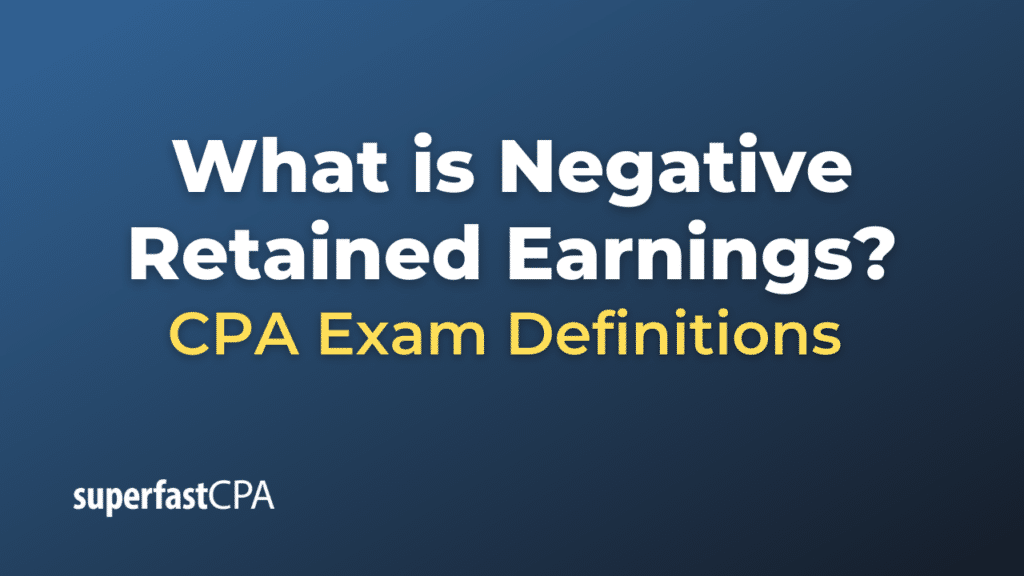Negative Retained Earnings
Retained earnings represent the cumulative net income that a company has earned and retained for reinvestment back into the business or to pay down debt, rather than distributed to shareholders as dividends. It’s an account under shareholder’s equity on the balance sheet.
Negative retained earnings occur when the total dividends paid out by a company are greater than its total net income since inception. In other words, a company has negative retained earnings when its accumulated losses and/or dividends are greater than its accumulated net income. It can be a warning sign that the company is in financial distress, as it indicates the company has not been profitable over time or has chosen to pay out more in dividends than it has earned.
However, negative retained earnings do not necessarily mean the company is unprofitable in the current period, as the balance represents the accumulation of retained earnings over the life of the company. A start-up or growth company, for example, may have negative retained earnings as it invests heavily in its growth and operations, which could lead to losses in the early years.
The account is usually titled “Accumulated Deficit” or “Accumulated Losses” when the balance is negative.
Example of Negative Retained Earnings
Suppose a startup tech company named TechX is in its third year of operations. In its first two years, the company had heavy expenditures and investments in research, development, and marketing to establish its market presence. This led to net losses of $500,000 in the first year and $200,000 in the second year.
In its third year, TechX starts gaining traction in the market and earns a net income of $300,000. However, due to the losses in the first two years, the company still has negative retained earnings.
Here’s how we calculate it:
Retained Earnings = Cumulative Net Income – Dividends Paid
In this case, the company hasn’t paid any dividends, so we can simplify the equation to:
Retained Earnings = Cumulative Net Income
This gives us:
Retained Earnings = -$500,000 (Year 1 net loss) – $200,000 (Year 2 net loss) + $300,000 (Year 3 net income) = -$400,000
So, despite making a profit in the third year, TechX would report negative retained earnings (or an accumulated deficit) of $400,000 on its balance sheet.
This doesn’t necessarily mean that TechX is in financial trouble. It’s not uncommon for startups to operate at a loss in their early years as they invest in their growth. The key for TechX would be to continue growing its profitability to eventually overcome its accumulated deficit.













